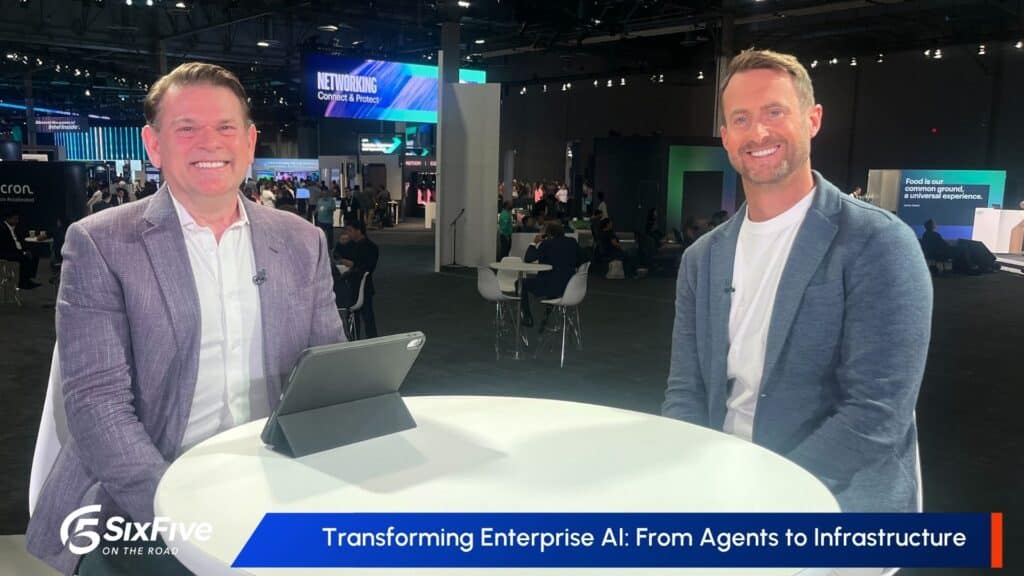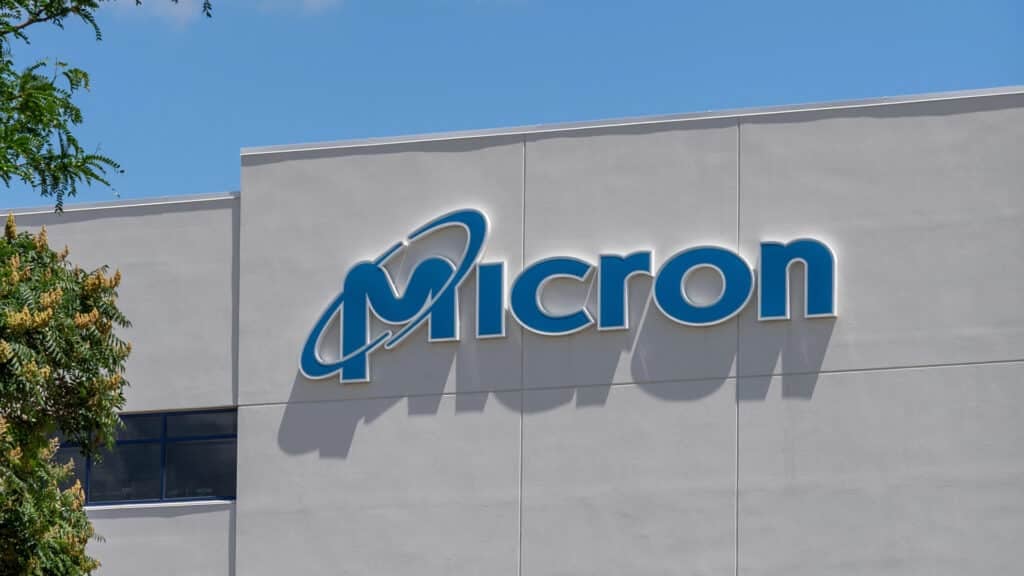In this vignette of The 5G Factor, Ron Westfall and Todd R. Weiss discuss why they see Ciena’s feature and performance boosts in its xHaul router portfolio, which were highlighted at the Fiber Connect 2023 event, as critical to delivering improved capabilities to 5G mobile operators to boost 5G networks and innovation. The discussion highlighted:
Ciena xHaul Routers Getting Advanced Timing Features. Ciena stood out at The Fiber Connect 2023 event at Orlando in August 2023 through its innovative work in bringing higher performance, improved accuracy, and broader capabilities to its xHaul routers that are used by 5G mobile operators. The Ciena xHaul routers give operators the ability to easily visualize and manage timing and synchronization using Ciena’s MCP, the very same domain controller through which customers do their multi-layer network management. Accuracy in frequency, phase, and time synchronization is required for optimal RAN performance, which is vitally important to mobile operators. As operators leverage network timing distribution across their transport infrastructure to complement local Global Navigation Satellite System (GNSS) at cell sites, they get the needed technologies to build a more robust RAN architecture, which is important to their bottom lines.
Watch The 5G Factor show here:
Or, you can watch the full episode here, and while you’re there, subscribe to our YouTube channel.
Listen to the full episode here:
If you’ve not yet subscribed to The 5G Factor, hit the ‘subscribe’ button while you’re there and you won’t miss an episode.
Disclaimer: The Futurum Tech Webcast is for information and entertainment purposes only. Over the course of this webcast, we may talk about companies that are publicly traded and we may even reference that fact and their equity share price, but please do not take anything that we say as a recommendation about what you should do with your investment dollars. We are not investment advisors and we ask that you do not treat us as such.
Transcript:
Ron Westfall: At that Fiber Connect event, I saw Ciena come out with some, I think, interesting capabilities.
To be specific, Ciena is continuing to develop its xHaul portfolio to meet what I think are some very stringent timing and synchronization requirements in the fiber backhaul network. As a little more background, 5G systems require accuracy and frequency, phase, and time synchronization to, quite simply, optimize RAN performance. As a result, we’re seeing operators are now looking at more and more ways to leverage network timing distribution across their transport infrastructure to compliment, for example, local, global navigation satellite system or GNSS at cell sites. That, quite simply, yields a more robust RAN architecture.
Todd R. Weiss: Yeah, yeah. Absolutely.
Ron Westfall: Yes, and as such, Todd, the accuracy and resilience challenges are further spiced by the need to, of course, minimize costs and investments. And so that is compounded by the fact that every operator out there, with maybe a few greenfield exceptions, had to deal with legacy non-time-aware third party network segments and also the ability to really integrate this into a fully-managed view. And so that clearly is a challenge, and how Ciena’s responding to that is, I think, very insightful and very important.
For example, at their R&D labs in Ottawa, we see Ciena showcasing xHaul portfolio advancements. This is, I think, again, meeting that timing and synchronization priority that operators are definitely very keen on, they’re very hot on. As such, Ciena is demonstrating a streamlined approach to deploying and managing timing distribution across a 5G network, and this includes G.8275.1 and G.8275.2 interworking capabilities as well as assisted partial timing support. To top it all off, Ciena submitted pre-standard Assisted Full Timing Support failover schemes, and that, I think, can put operators at a better position to, quite simply, make their advanced timing capabilities all of the more ready for 5G prime time, especially, again, as 5G cuts over to standalone capabilities and, just a little further out, adopt 5G advanced capabilities.
I think to round out my observation here, key to advancing these xHaul capabilities is ensuring that the operators have an easy way to visualize all this, and this is where Ciena’s MCP, that is the domain controller, allows them to be able to implement multi-layer network management. And so with that, Todd, what else do you see that Ciena’s doing that is really standing out?
Todd R. Weiss: Well, those are great points, but the other thing I think is really a big deal is their flexibility. The flexibility to adapt and support the RAN evolution is a key design driver. Without flexibility, this is not going to grow. To be able to have service providers be able to do whatever they need to do, wherever they need to do it, with anything they need to do is huge. That’s the thing that will help this grow to become something that just is a huge, and even … That is something that will help this grow to be absolutely everywhere around the world.
I think that transport flexibility continues to be top of mind for mobile operators. It’s absolutely necessary. It’s absolutely critical. Transport networks’ ability to adapt to new requirements, and they’re coming, they’re always going to come, and thus enable RAN evolution, is seen as critical in the search for better performance at lower costs. Operators are especially looking for high 10 gigabit ethernet or up to 25 gigabit ethernet port densities to accommodate new spectrum introduction, all in compact and energy efficient platforms that minimize power and space in dense cell site environments.
It’s like transistors. It’s going to get smaller and smaller and denser and denser. That’s the way technology works even here. Slicing readiness is also mentioned as critical to pave the way to future end-to-end slicing deployments, making slicing easier, better is going to be a huge thing. Then, openness of transport platforms and versatility to support any combination of fronthaul, midhaul, backhaul, and preferably the ability to converge even non-mobile traffic in the same router, those are things that are also factors being identified by many as highly valuable to future-proof their transport designs. This is a big deal. So Ciena’s xHaul portfolio, it’s positioned solidly to accelerate operator RAN evolution. This is a time we’re going to remember. We’re going to look back at this, I think, and mark when this change happened, and I think it’s going to be very influential.
Ron Westfall: Oh. I agree wholeheartedly, Todd. I think you brought out two excellent points. For example, slicing readiness, T-Mobile CTO John Saw has come out and said, “We’re ready. Let’s do this, because we’ve been talking about it for a while.” And so this, I think, is a true execution point, that is here is a milestone in the industry that a major US operator is ready to do this slicing readiness. Also, what I really like is your point about open access networks. I think we’re getting closer, at least in the US, and this has already been implemented in many parts of Europe, is that different operators will compete to use the same network to offer services to customers out there.
Other insights from The Futurum Group:
5G Factor: Fiber’s Vital Role in 5G
Clearfield Shows the Integral Role Fiber Plays in 5G Evolution
Fujitsu and Microsoft Running 5G, Edge Connectivity Trials
Author Information
Ron is an experienced, customer-focused research expert and analyst, with over 20 years of experience in the digital and IT transformation markets, working with businesses to drive consistent revenue and sales growth.
He is a recognized authority at tracking the evolution of and identifying the key disruptive trends within the service enablement ecosystem, including a wide range of topics across software and services, infrastructure, 5G communications, Internet of Things (IoT), Artificial Intelligence (AI), analytics, security, cloud computing, revenue management, and regulatory issues.
Prior to his work with The Futurum Group, Ron worked with GlobalData Technology creating syndicated and custom research across a wide variety of technical fields. His work with Current Analysis focused on the broadband and service provider infrastructure markets.
Ron holds a Master of Arts in Public Policy from University of Nevada — Las Vegas and a Bachelor of Arts in political science/government from William and Mary.











